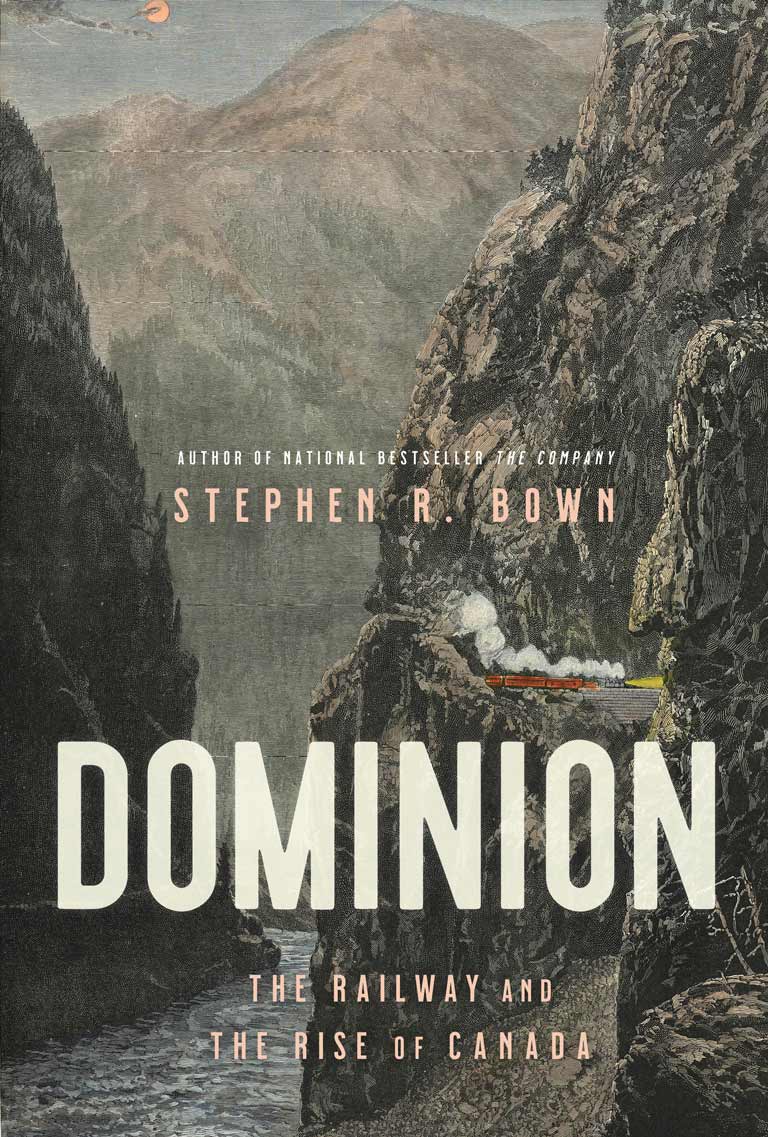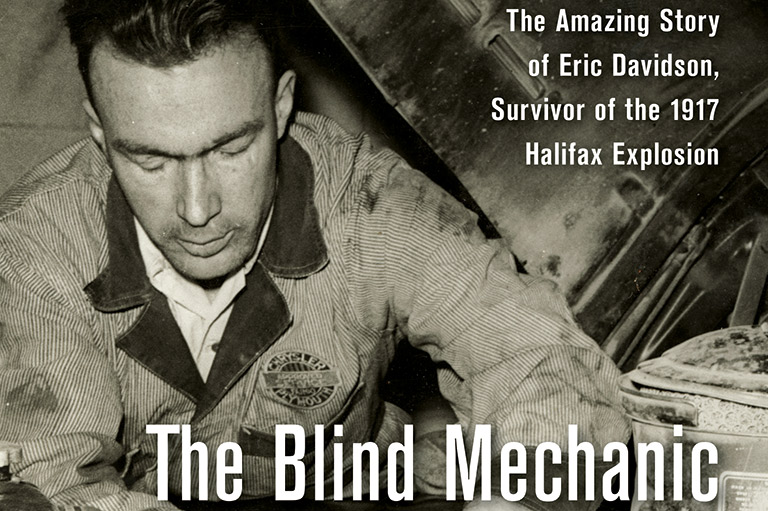Dominion

Dominion: The Railway and the Rise of Canada
by Stephen R. Bown
Doubleday Canada
412 pages, $39.95
A double review with
New World Dreams: Canadian Pacific Railway and the Golden Northwest
by David Laurence Jones
Heritage House
448 pages, $49.95
In Stephen R. Bown’s book Dominion: The Railway and the Rise of Canada, readers are carried along in comfort by the author’s effortless prose, marvelling at the people, places, and events that make up the story of Canada’s transcontinental railway. Besides its readability, the greatest strength of Bown’s book lies in the multi-pronged approach to its subject matter.
The story of the construction of the Canadian Pacific Railway “is a sweeping tale, with technological, political, economic, geographical and social components,” he writes in his introduction. “It involves the dreams of politicians in Ottawa, Toronto, and Montreal; the financing genius and manipulative shenanigans of railway promoters to devise a business plan that would justify the expense; the feats of engineers to push a railway through the rock and bog around Lake Superior and through the rugged mountains of British Columbia; the adventures and hardships of explorers and surveyors; the occasional resistance of Indigenous peoples; and the terrific and horrific work of the labourers who poured their lives into it.”
Bown explores each of these aspects. In the book’s opening pages we meet our main protagonist, Prime Minister John A. Macdonald. Obsessed with the idea of creating a British dominion stretching from the Atlantic Ocean to the Pacific, Macdonald is convinced that this can succeed only if a transcontinental railway is built in time to stop the rapidly expanding United States of America from seizing the vast territories of the West and annexing (with or without its consent) the colony of British Columbia. Impeccably logical in theory, but inconceivably difficult in practice, Macdonald’s railway idea soon comes up against many hard realities.
One of these realities was the need to blast through solid rock. Bown takes readers through an interesting digression regarding the invention of the explosive nitroglycerine and the development of Nobel’s Blasting Oil by none other than Alfred Nobel, eventual founder of the famous Nobel prizes. According to Bown, Nobel was an entrepreneur and inventor who had “a morbid fascination with explosives” and whose blasting oil — which used a small explosion to trigger a larger one — ushered in a civil-engineering revolution that allowed railways to be built through seemingly impossible terrain.
With 7 uniquely curated newsletters to choose from, we have something for everyone.
But there were also human obstacles to the construction of the railway: notably the Métis and First Nations inhabitants of the area through which the railroad was destined to pass. Bown spends several chapters discussing the conflicts between the Métis of the Red River Settlement and the government in Ottawa, as well as the struggles of First Nations such as the Cree, Siksika (Blackfoot), and Niisitapi peoples, as they coped with the extermination of the buffalo and the demands of the Canadian government for them to settle on reserves or face starvation. “How could they even conceive of a life so radically different from the one they knew?” Bown asks. “What would life be like without the buffalo? Or without their free-roaming ways across a land over which they were masters, or had been until recently?”
Other notable characters in the book include the railway baron William Cornelius Van Horne, an indefatigable industrialist who “despised drunkenness, sloth and dereliction” but loved a good dinner and fed his workers well, ensuring that they had “a plentiful hot meal to look forward to at the end of each day.” We also read about the stoic and philosophical Dukesang Wong, one of the thousands of Chinese labourers who built the railroad while facing unequal treatment and, sometimes, outright hatred because of their race. Wong’s diary is the only known first-hand account written by a Chinese railroad labourer.
While Dominion centres around the building of the CPR, David Laurence Jones’s book New World Dreams focuses mainly on the period after the railway had been completed. Jones, the CPR’s former manager of internal communications, explains the railway’s role in bringing settlers and tourists to the West while transporting grain grown on the prairies to shipping terminals on the Great Lakes and the Atlantic coast.
Where New World Dreams excels is in the quality and quantity of its artwork. This coffee-table-sized book is chock full of posters, many in full colour, that advertise such alluring prospects as “Ready- Made Farms in Western Canada” and that encourage immigrants via appeals such as “Canada wants women for household work... Good wages, employment guaranteed.” In addition, there are dozens of photographs showing the faces of railway workers, hopeful immigrants, and eager tourists, all transported westward by the marvellous iron horse.
Together these books provide readers with a deep appreciation of the fundamental role of the Canadian Pacific Railway in shaping the Canada we know today.
We hope you’ll help us continue to share fascinating stories about Canada’s past by making a donation to Canada’s History today.
We highlight our nation’s diverse past by telling stories that illuminate the people, places, and events that unite us as Canadians, and by making those stories accessible to everyone through our free online content.
Canada’s History is a registered charity that depends on contributions from readers like you to share inspiring and informative stories with students and citizens of all ages — award-winning stories written by Canada’s top historians, authors, journalists, and history enthusiasts.
Any amount helps, or better yet, start a monthly donation today. Your support makes all the difference. Thank you!
Themes associated with this article
Advertisement
Save as much as 52% off the cover price! 6 issues per year as low as $29.95. Available in print and digital.




